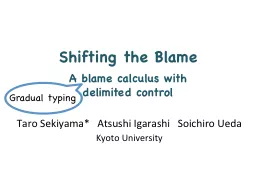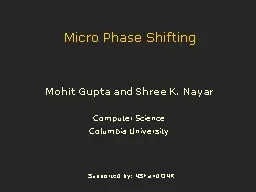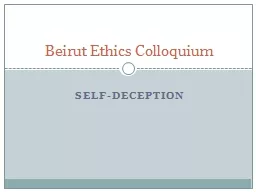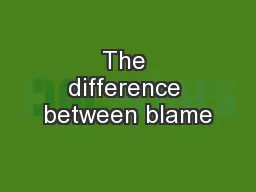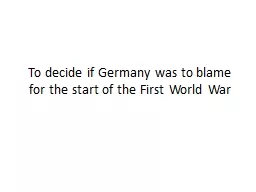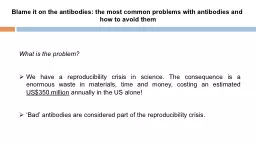PPT-Shifting the Blame
Author : pasty-toler | Published Date : 2016-08-01
A blame calculus with delimited control Taro Sekiyama Atsushi Igarashi Soichiro Ueda Kyoto University Gradual typing Two styles of typing Static typing Dynamic
Presentation Embed Code
Download Presentation
Download Presentation The PPT/PDF document "Shifting the Blame" is the property of its rightful owner. Permission is granted to download and print the materials on this website for personal, non-commercial use only, and to display it on your personal computer provided you do not modify the materials and that you retain all copyright notices contained in the materials. By downloading content from our website, you accept the terms of this agreement.
Shifting the Blame: Transcript
Download Rules Of Document
"Shifting the Blame"The content belongs to its owner. You may download and print it for personal use, without modification, and keep all copyright notices. By downloading, you agree to these terms.
Related Documents

